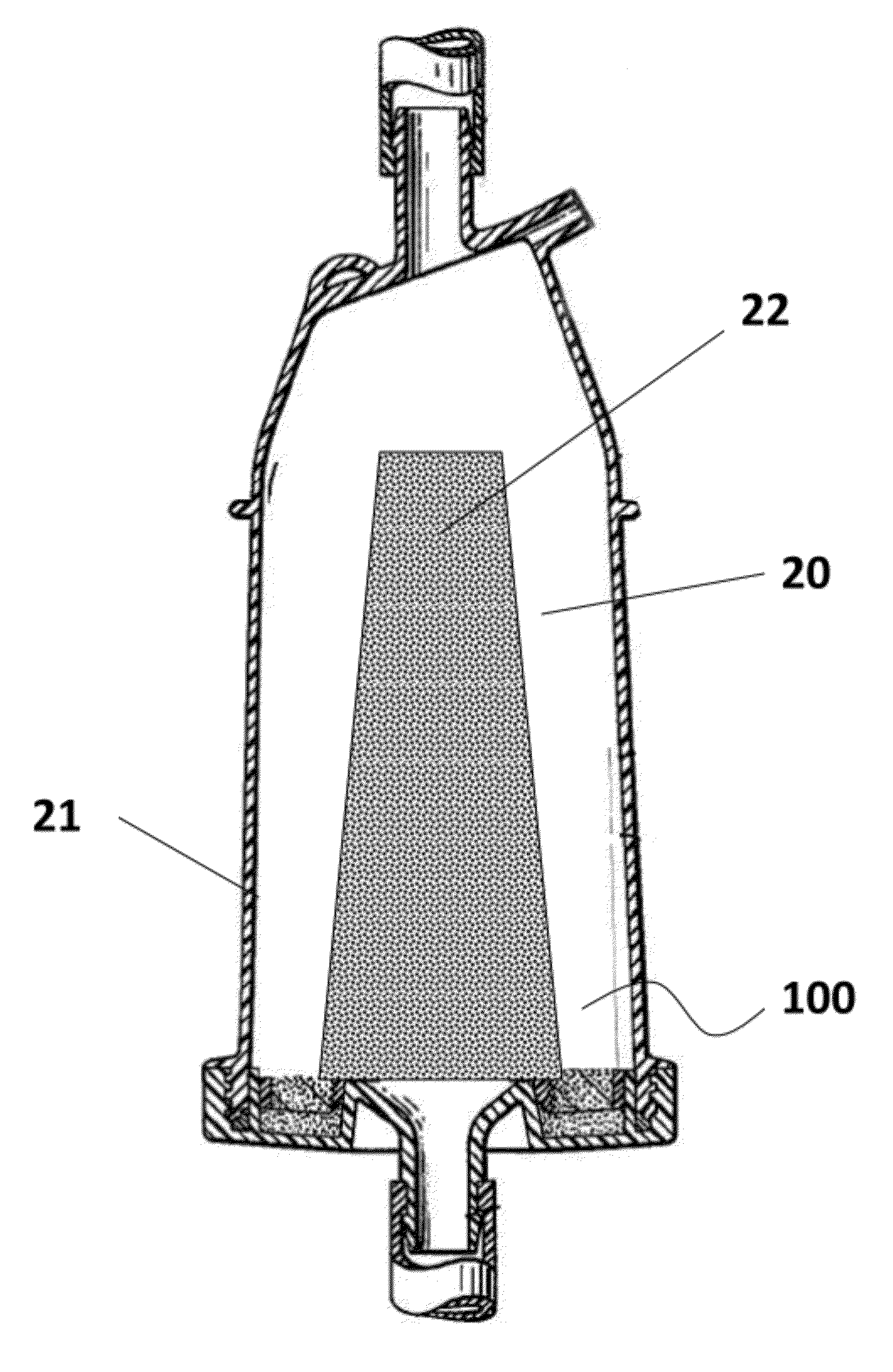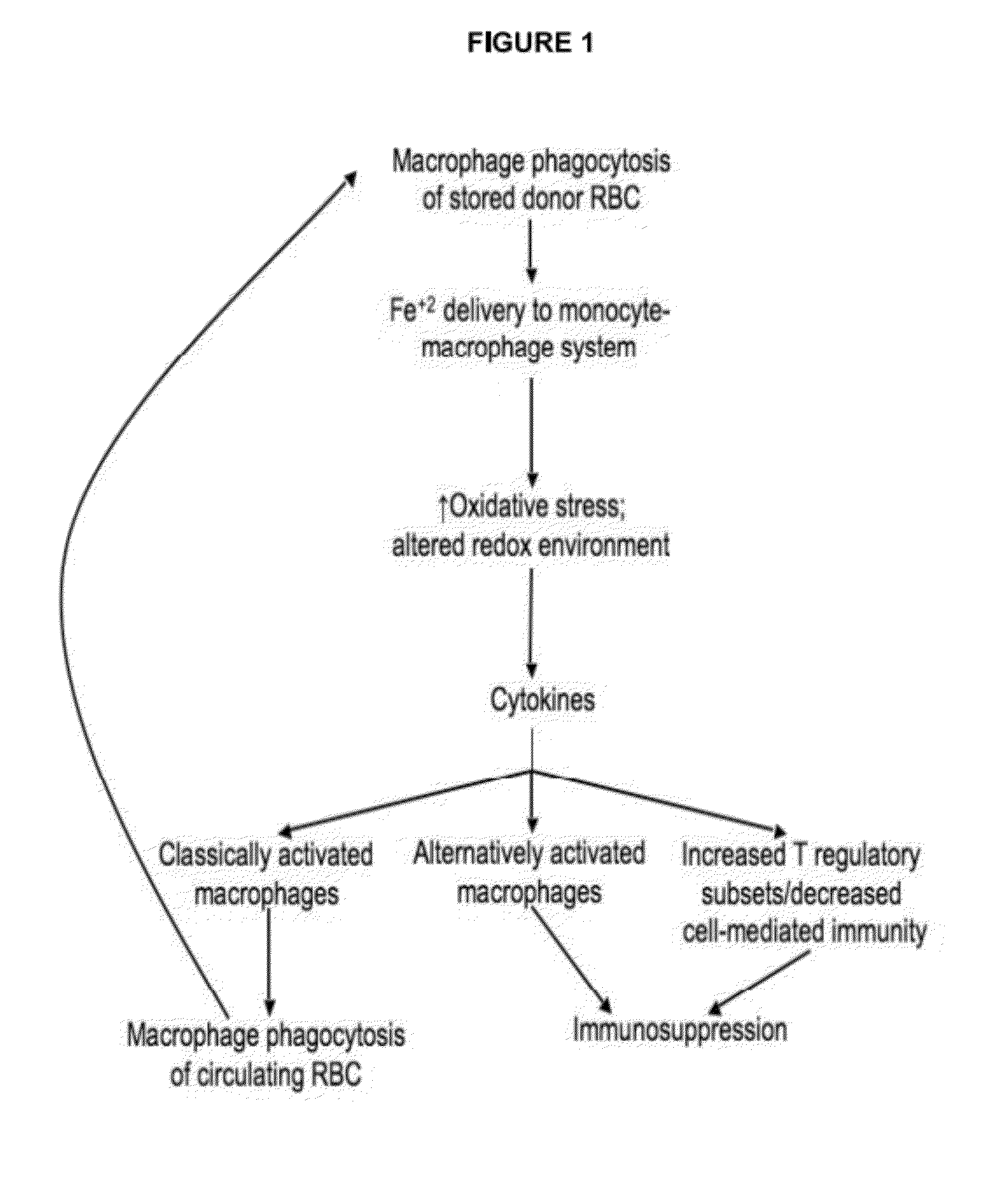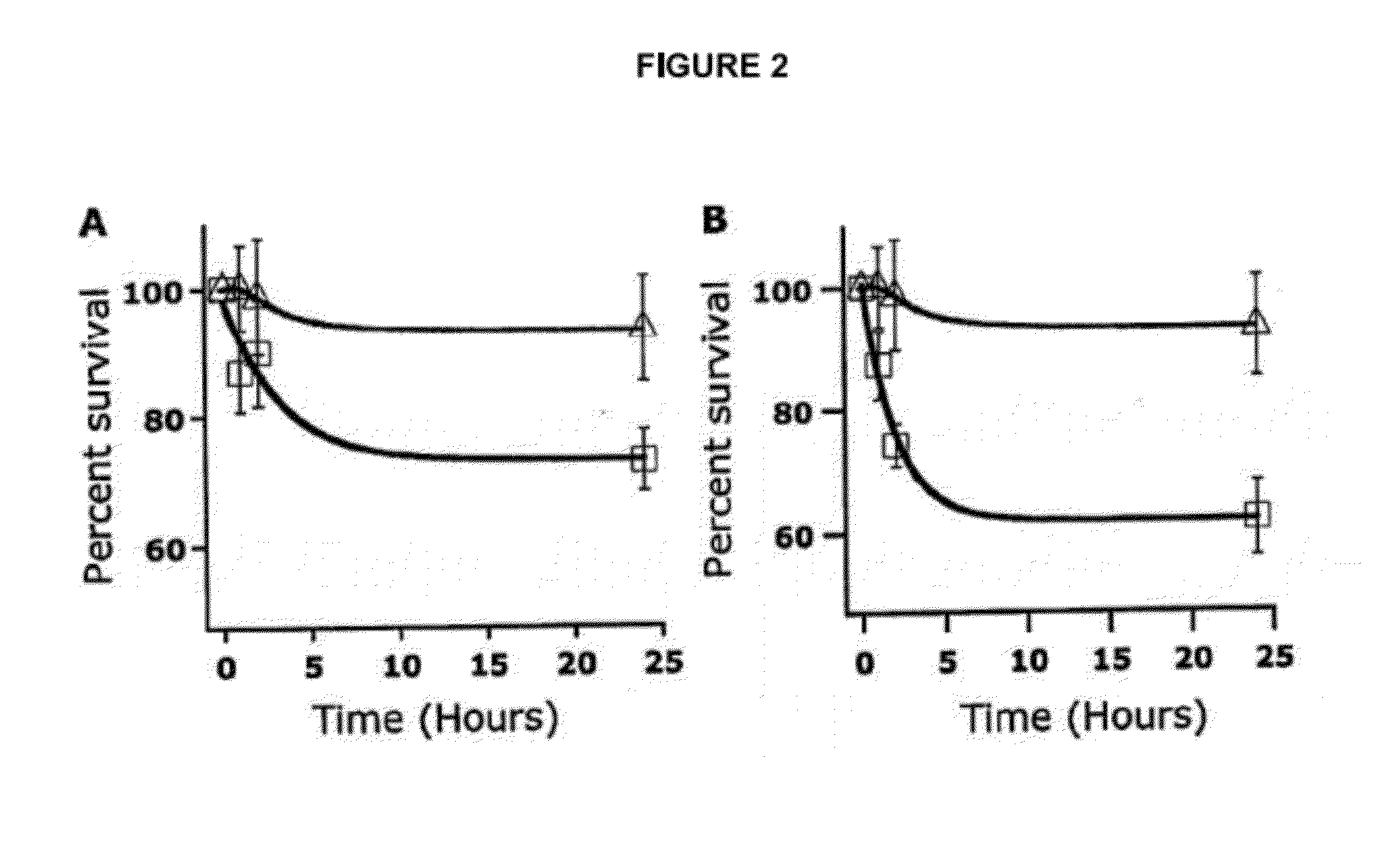Methods, kits and compositions for ameliorating adverse effects associated with transfusion of aged red blood cells
a technology of red blood cell and kit, which is applied in the direction of drug compositions, pharmaceutical packaging, amide active ingredients, etc., can solve the problems of increasing mortality, increasing morbidity and mortality, increasing mortality, and increasing mortality, so as to improve the effect of adverse effects, ameliorating adverse effects, and improving adverse effects
- Summary
- Abstract
- Description
- Claims
- Application Information
AI Technical Summary
Benefits of technology
Problems solved by technology
Method used
Image
Examples
example 1
Storage of Leukoreduced Mouse and Human RBCs is Similar
[0119]Mouse blood was obtained aseptically by cardiac puncture into a standard storage solution used for humans: CPDA-1 (Baxter, Deerfield, Ill.). Whole blood from 30-50 mice was leukoreduced using a pediatric leukoreduction filter (Purecell Neo, Pall Corp., Port Washington, N.Y.), centrifuged, and stored at a 60-75% hematocrit at 4° C. for up to 21 days. Twenty-one or fewer days was selected for mouse RBCs (rather than ≦35 days used with humans) because the normal mouse RBC lifespan is approximately half that of human RBCs [86]. Pre-storage leukoreduction of mouse RBCs achieved at least a 3-log10 reduction in leukocytes (LeucoCOUNT kit, BD Biosciences, San Jose, Calif.; not shown).
[0120]RBC survival studies in mice were performed using 51Cr-labeling [87]. The 24-hour post-transfusion survival of 2 and 3 week old stored mouse RBCs was 73% (±5%) and 62% (±6%), respectively, whereas that of fresh RBCs was 93% (±8%) (mean (±1 SD) (...
example 2
Mice
[0129]Wildtype C57BL / 6 and FVB / NJ mice were purchased from the Jackson Laboratory (Bar Harbor, Me.). SAA1-luciferase reporter mice were obtained from Caliper Life Sciences (Hopkinton, Mass.). Mice were used at 8-12 weeks of age. Procedures were approved by the appropriate Institutional Animal Care and Use Committees.
Mouse RBC Collection, Storage, and Derivatives.
[0130]FVB / NJ and C57BL / 6 mice were bled aseptically by cardiac puncture into citrate phosphate dextrose-adenine-1 (CPDA-1) obtained directly from di-(2-ethylhexyl)phthalate-plasticized polyvinyl chloride human primary collection packs (product code 4R3611; Baxter). The final CPDA-1 concentration used for storage was 14%. Whole blood collected from 30-50 mice was pooled and leukoreduced using a Neonatal High Efficiency Leukocyte Reduction Filter (Purecell Neo, Pall Corp.), centrifuged (400 g for 15 minutes), and volume reduced to a final hemoglobin level of 17.0-17.5 g / dL (as determined by a modified Drabkin's assay [106]...
example 3
Iron Chelation Inhibits the Pro-Inflammatory Cytokine Response Induced in Mice by Transfusion of Older Stored RBCs
[0159]Proof-of-principle pre-clinical studies were performed to show that this approach will lead to innovative treatments to prevent adverse outcomes in recipients of older stored RBC transfusions. Thus, mice received 120 mg / kg of deferoxamine (DFO; Novartis, East Hanover, N.J.), an FDA-approved intravenous iron chelator, or 30 mg / kg of deferasirox (Exjade; Novartis), an FDA-approved, cell permeable, oral iron chelator, at 24 and 6 hours before RBC transfusion. Chelation statistically significantly blocked increases in plasma KC and IL-6 levels, and demonstrated a trend towards reducing MCP-1 levels (FIG. 9). Thus, new therapeutic interventions will result from confirming the animal data regarding the mechanism by which older stored RBC transfusions produce adverse effects.
PUM
| Property | Measurement | Unit |
|---|---|---|
| mean storage time | aaaaa | aaaaa |
| volume | aaaaa | aaaaa |
| volume | aaaaa | aaaaa |
Abstract
Description
Claims
Application Information
 Login to View More
Login to View More - R&D
- Intellectual Property
- Life Sciences
- Materials
- Tech Scout
- Unparalleled Data Quality
- Higher Quality Content
- 60% Fewer Hallucinations
Browse by: Latest US Patents, China's latest patents, Technical Efficacy Thesaurus, Application Domain, Technology Topic, Popular Technical Reports.
© 2025 PatSnap. All rights reserved.Legal|Privacy policy|Modern Slavery Act Transparency Statement|Sitemap|About US| Contact US: help@patsnap.com



